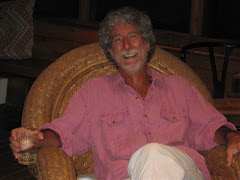For many years, folks who know me well
sometimes refer to me as the reptile. While I have not encouraged
this nickname, I have come to understand that it is not wholly
inappropriate. I don't tend to sweat very much. I tolerate very
warm temperatures without great effort. While others are swimming in
body soaking perspiration, my body tends to dampen only slightly even
during intense physical activity which has prompted my friends –
out of jealousy I am quite certain – to liken me to a lower strata
of animal life. Which is why I was curious how I might respond to a
taste of Bikram Yoga. Bikram is that version of yoga that requires
you to spend 90 minutes in a room heated to 105 degrees and 40 to 50%
humidity while you twist and turn and bend your body in ways that
make you feel like a first cousin to a pretzel. Its benefits are
legend ranging anywhere from stress reduction and enhanced
flexibility to a sense of well being and injury repair. This is, of
course, if you can steer clear of blacking out, crumpling over from
dehydration, or succumbing to fits of nausea. I'm just sayin'.
I confess to being a bit wary of this
experience. Lily has done it for a long time and, while she returns
from class looking like she's been for a marathon swim, she swears
she feels like a million bucks afterward. Since I have all the
flexibility of a telephone pole, I concluded my time had come to turn
over a new leaf and get my body to do things not previously witnessed
by humankind.
We arrived at the bikram yoga studio and
Lily, perhaps sensing my less than robust confidence at what would
follow, generously found me a spot for my mat at the rear of the room
where I could do my contortions in relative anonymity. And, as a
bonus, there was a slight leak at the rear door that permitted the merest
suggestion of cooler air to extend to my ankles. The room filled
with persons that I immediately concluded were seasoned veterans of
this discipline. I announced for all to hear that my goals were
limited: don't die, and try beyond all measure not to leave the
room, no matter how close to fainting you might be, no matter how
nauseous. That latter issue is sort of an unwritten rule.
Our instructor was Amy Lane, a petite
and energetic young lady who does several of these classes daily: a
pro's pro. Amy Lane speaks at a pace that would shame an auctioneer.
She belts out direction and helpful guidance at an alarming clip
which, at first, seems so at odds with the uber-tropical atmosphere.
But, Amy Lane is monitoring everyone with an eagle eye and a finely
balanced sense of humor. Sadly, for me, I am so focused on just
breathing and trying to bend my body in oh so unfamiliar ways, that I
find myself watching other classmates to see what it is I'm supposed
to be doing. I'm just trying to keep up here.
As my body swoops and stretches, bends
and creaks, I find that I only feel like blacking out every now and
then. My lightheadedness comes and goes. Man, it's hot. The trick
is to stay under control keeping your breathing even and slow and not
give in to open-mouthed gulps of air which, let me tell you, can be
very tempting. Amy Lane says it's far better to suppress this urge
for open-mouthed breathing lest your body lunge into a panicked fight
or flight mode. Comforting. And, I find that whatever reptilian
habits I may have inadvertently developed over the years are briskly
out the window. Gone. I am shvitzing as I never have in my life.
Even my ankles are sweating. When I reach down to grab them in one
pose, they simply slide off my already liquified hands. Sweat is
flying off me. My shirt, once a light gray when I entered this
place, is now almost black and drenched. I reach for my water
bottles and gulp what I can without losing the rhythm of the program.
When the clock strikes twelve – the
moment when the 90 minute session is reportedly over – I suppress
my almost overwhelming drive to urgently advise Amy Lane that she can
stop now. But, I swallow that urge and melt into shavasana or corpse
pose where you can lie still on the floor giving full surrender to
your exhaustion. Amy Lane passes out chilled washcloths which, when
resting on one's forehead and eyes, provide a sort of outsized
pleasure that, in that moment, is pretty much what you want in life
above all else.
I have survived! I am not dead; I did
not black out. I am not nauseous. True, I am wondering what the
quickest route to the North Pole might be, but I am more than
relieved; I am energized by my modest success.
I will return! Isn't that what
reptiles do?

